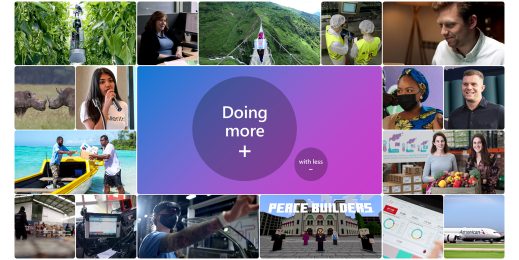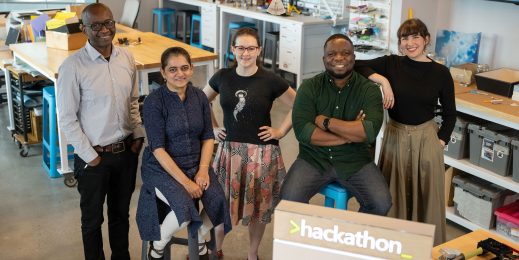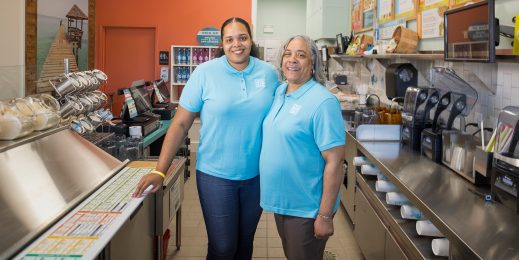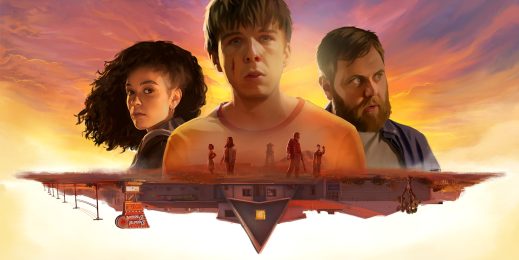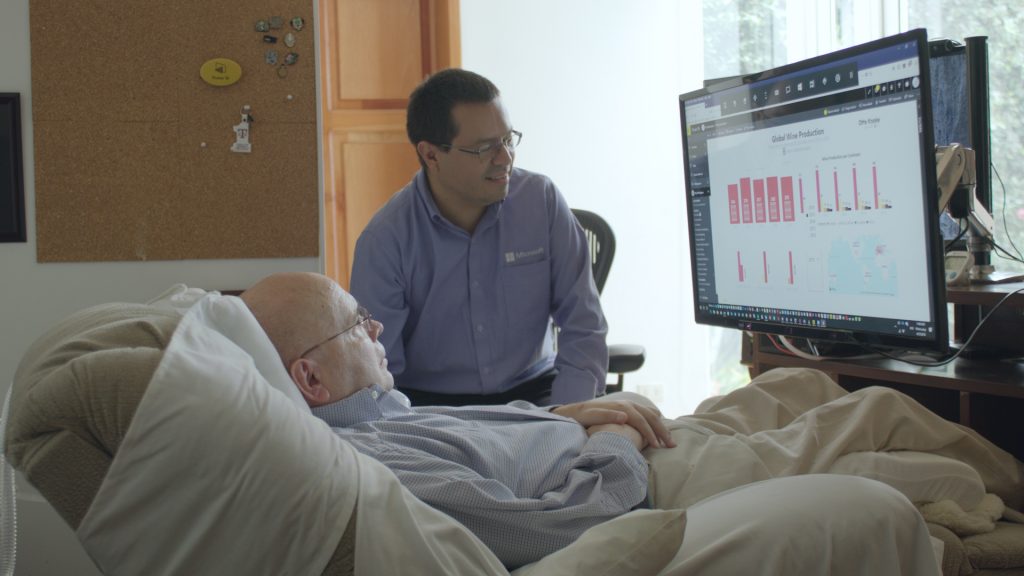
Data guru living with ALS modernizes industries by typing with his eyes
The self-proclaimed “oldest nerd of Guatemala,” Otto Knoke is an admitted workaholic, glued to his computer screen from 4 a.m. to 8 p.m. as he analyzes data and creates business-intelligence dashboards for customers ranging from restaurants to hotels and real-estate companies.
The 60-year-old data analyst is well-known in Guatemala’s business community, especially after he helped modernize the banking industry by bringing ATMs to the country 20 years ago. But even as the then-40-year-old’s career was blossoming, his muscles were beginning to fail him. In 1998, Knoke (pronounced kuh-NO-kuh) was diagnosed with amyotrophic lateral sclerosis, or ALS, and was told he had two years to live.
Always an early adopter of new technology, Knoke persistently researched ways tech advances could help him thrive even as the disease has progressed. Two decades later, he has become the first person in Guatemala to use Microsoft’s new eye-tracking software for Windows 10, called Eye Control. That’s given him access to pivotal tools, helping his mind overcome the restrictions of his body, and his business is booming.
“Technology has permitted me to work and communicate with my loved ones, with the people who help me and with my friends,” Knoke said in an interview conducted over email, his responses typed using his eyes. “And now that I’ve learned to use Eye Control and a foot mouse at the same time, my productivity at work has skyrocketed and my relationships have improved.”

ALS, also known as Lou Gehrig’s disease, erodes muscular functions until a person is unable to walk, talk or breathe. There’s no known cause or cure, and it usually results in death within five years, according to the ALS Association, although physicist Stephen Hawking lived with the disease for 55 years until he died earlier this year – one of just 5 percent of patients, including Knoke, to survive for more than 20 years.
Once an avid cyclist, weightlifter and tennis player, Knoke lost use of his hands and arms first, which meant he couldn’t hold a cane to support his weakening legs. So he’d tuck his arm under his wife’s, and she propelled him forward. His symptoms progressed slowly, allowing him to keep his job as a chief executive officer in the banking industry for 12 years. He retired in 2010 when he began losing his voice, making it difficult to communicate with his board of directors.
But he didn’t stop working; he simply moved his office home and became a data analyst, helping nonprofits and small- to medium-sized companies use new business intelligence tools to get value from their data.
“He’s not retired – he doesn’t know the meaning of that word – he just doesn’t go to the office anymore,” said his wife of 32 years, Pamela Knoke, who quit her job as a bank process manager to become his business partner – and his voice.
The couple remodeled their two-story townhouse near Guatemala City so he had everything he needed on the first floor and didn’t have to navigate stairs. Otto learned to use a trackball mouse with his foot to type with an on-screen keyboard. But it was cumbersome, and he needed Pamela nearby to move the cursor from one corner of his two 32-inch screens to another as he navigated Excel spreadsheets and Power BI dashboards.
A tracheotomy was put in his throat to help him breathe, taking away his limited speech and increasing his isolation. But when Knoke, who spends two hours a day reading blogs and researching, saw his friend Juan Alvarado’s post about the new Eye Control feature in Windows 10, he let loose with his version of a shout and immediately ordered the Tobii Eye Tracker hardware to use with the software.

Alvarado, who met Knoke as a database consultant working on the ATM system Knoke had implemented, hadn’t known about Knoke’s condition until he suddenly saw him in a wheelchair one day. And fittingly, Eye Control itself began with a wheelchair.
Microsoft employees, inspired by former pro football player Steve Gleason, who had lost the use of his limbs to ALS, outfitted a wheelchair with electronic gadgets to help him drive with his eyes during the company’s first Hackathon, in 2014. The project was so popular that a new Microsoft Research team was formed to explore the potential of eye-tracking technology to help people with disabilities, leading to last year’s release of Eye Control for Windows 10.
Knoke said it was “a joy” to learn how to type with his eyes, getting the feel of having sensors track his eye movements as he navigated around the screen and rested his gaze on the elements he wanted to click. Using Eye Control and the on-screen keyboard, he now can type 12 words a minute and creates spreadsheets, Power BI dashboards and even PowerPoint presentations. Combined with his foot-operated mouse, his productivity has doubled. He plans to expand his services to the U.S., where he spent six years studying and working in the 1970s. He no longer relies on his wife’s voice, because Eye Control offers a text-to-speech function as well.
“It was frustrating trying to be understood,” Knoke said in the email interview. “After a few days of using Eye Control I became so independent that I did not need someone to interact with clients when there were questions or I needed to explain something. We have a remote session to the client’s computer, and we open Notepad and interact with each other that way.”
His wife and his nurse had learned to understand the sounds he was able to make, even with the tracheotomy restricting his vocal chords. But now he can communicate with his three grown daughters, his friends and all his customers.
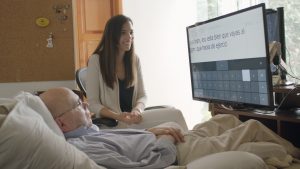
“Now when our children visit, he can be not just nodding at what they say, but he can be inside the conversation, too,” Pamela Knoke said. “He always has a big smile on his face, because he’s got his independence back.”
He’s also started texting jokes to friends again.
“It’s kind of like it brought my friend back, and it’s amazing,” Alvarado said. “Otto told me that for him, it was like eye tracking meant his arms can move again.”
Being able to text message with Eye Control has helped his business as well.
Grupo Tir, a real-estate development and telecommunications business in Guatemala, hired Knoke for several projects, including streamlining its sales team’s tracking of travel expenses with Power BI.
“Working with Otto has been amazing,” said Grupo Tir Chief Financial Officer Cristina Martinez. “We can’t really meet with him, so we usually work with texts, and it’s like a normal conversation.
“He really has no limitations, and he always is looking for new ways to improve and to help companies.”
Otto Knoke uses Eye Control in Windows 10 to create spreadsheets and interactive Power BI reports, such as this one, for his clients.
Knoke’s ready feedback on the Microsoft products he works with every day, such as Power BI, led to improvements in the software’s features, along with a job offer that he calls “a dream come true.” The company hired him as a contractor this month to serve as a community manager for Power BI’s customer advisory team.
“I was really inspired,” said Cesar Cernuda, the president of Microsoft Latin America, who visited Knoke at his home earlier this year. “And it’s not that we’re helping him, but that he’s helping all of his customers, as an expert on Power BI.”
Knoke’s pioneering use of Eye Control in Guatemala and the way he’s been able to harness technology to enrich his personal life spoke volumes to Mario Ibarguen, the general manager of Taco Bell Guatemala. The fast-food franchisee has been growing in the country, opening 54 restaurants including the world’s largest Taco Bell, housed in a former bank in Guatemala City. When Ibarguen needed a tool for the restaurant managers to measure growth and sales in real time, he knew Knoke would have the answer.
“All these tools that Otto has have helped him a lot, so it’s good to have someone like Otto helping us,” Ibarguen said.
Knoke credits his family, work, faith and attitude as the “winning ticket” that has sustained him as his disease progressed over the past two decades. And with his renewed ability to communicate, he said, “I’m so busy that I don’t have time to think about my disease.”
Top photo: Otto Knoke and Juan Alvarado discuss a Power BI report Knoke created using eye-tracking software for Windows 10.





